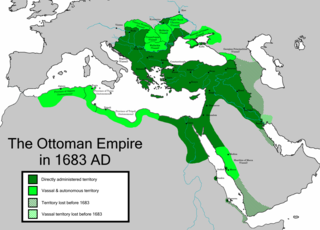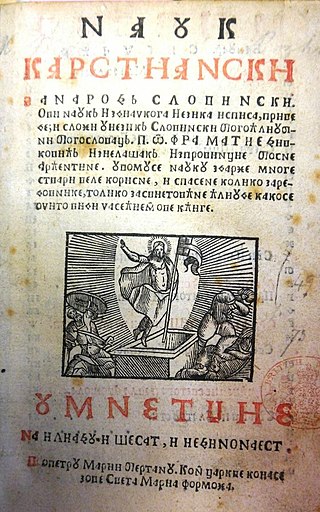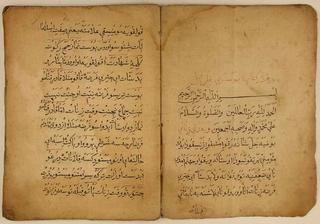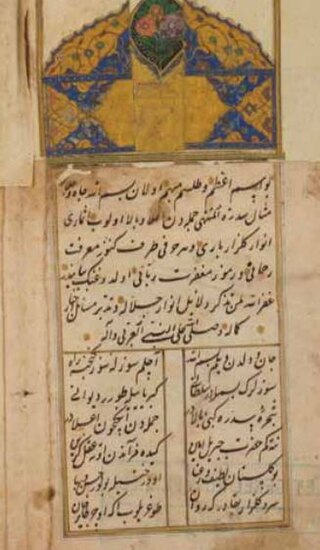
Serbo-Croatian – also called Serbo-Croat, Serbo-Croat-Bosnian (SCB), Bosnian-Croatian-Serbian (BCS), and Bosnian-Croatian-Montenegrin-Serbian (BCMS) – is a South Slavic language and the primary language of Serbia, Croatia, Bosnia and Herzegovina, and Montenegro. It is a pluricentric language with four mutually intelligible standard varieties, namely Serbian, Croatian, Bosnian, and Montenegrin.

Bosnian, sometimes referred to as Bosniak language, is the standardized variety of the Serbo-Croatian pluricentric language mainly used by ethnic Bosniaks. Bosnian is one of three such varieties considered official languages of Bosnia and Herzegovina, along with Croatian and Serbian. It is also an officially recognized minority language in Croatia, Serbia, Montenegro, North Macedonia and Kosovo.

Like the surrounding Balkan countries, Bosnia and Herzegovina has had a turbulent past marked by frequent foreign invasions and occupation. As a result, Bosnian music is now a mixture of Slavic, Turkish, Central European, Mediterranean, and other influences.

Tuzla is the third-largest city of Bosnia and Herzegovina and the administrative center of Tuzla Canton of the Federation of Bosnia and Herzegovina. As of 2013, it has a population of 110,979 inhabitants.

Mehmed "Meša" Selimović was a Yugoslav writer, whose works are widely considered some of the most important in Bosnian and Serbian literature. Some of the main themes in his works are the relations between individuality and authority, life and death, and other existential problems.

Ottoman Turkish was the standardized register of the Turkish language in the Ottoman Empire. It borrowed extensively, in all aspects, from Arabic and Persian. It was written in the Ottoman Turkish alphabet. Ottoman Turkish was largely unintelligible to the less-educated lower-class and to rural Turks, who continued to use kaba Türkçe, which used far fewer foreign loanwords and is the basis of the modern standard. The Tanzimât era (1839–1876) saw the application of the term "Ottoman" when referring to the language ; Modern Turkish uses the same terms when referring to the language of that era. More generically, the Turkish language was called تركچه Türkçe or تركی Türkî "Turkish".
Maleševci was a historical Vlach katun of Herzegovina that existed in the Late Middle Ages.

Bosnian Cyrillic, widely known as Bosančica, is a variant of the Cyrillic alphabet that originated in medieval Bosnia. The term was coined at the end of the 19th century by Ćiro Truhelka. It was widely used in modern-day Bosnia and Herzegovina and the bordering areas of modern-day Croatia. Its name in Serbo-Croatian is Bosančica and Bosanica the latter of which might be translated as Bosnian script. Serb scholars call it Serbian script, Serbian–Bosnian script, Bosnian–Serb Cyrillic, as part of variant of Serbian Cyrillic and deem the term "bosančica" Austro-Hungarian propaganda. Croat scholars also call it Croatian script, Croatian–Bosnian script, Bosnian–Croat Cyrillic, harvacko pismo, arvatica or Western Cyrillic. For other names of Bosnian Cyrillic, see below.

Živinice is a city located in Tuzla Canton in the Federation of Bosnia and Herzegovina, an entity of Bosnia and Herzegovina. It is located in northeastern Bosnia and Herzegovina, south of Tuzla. As of 2013, it has a population of 57,765 inhabitants.

Husein Gradaščević (Husein-kapetan) was an Ottoman Bosnian military commander who led an uprising against the Tanzimat, political reforms in the Ottoman Empire aimed at reducing Bosnian autonomy within Osmanli sultanate beside introduction of novel Western customs of governance. Born into a Bosnian noble family, Gradaščević became the captain of Gradačac in the early 1820s, succeeding his relatives in the position. He grew up surrounded by a political climate of turmoil in the western reaches of the Ottoman Empire. With the Russo-Turkish war (1828–29), Gradaščević's importance rose; the Bosnian governor gave him the task of mobilizing an army between the Drina and Vrbas.

Kladanj is a town and municipality located in the Tuzla Canton of the Federation of Bosnia and Herzegovina, an entity of Bosnia and Herzegovina. Kladanj is located on the road from Tuzla to Sarajevo along the river Drinjača, at the base of Konjuh mountain.

The literature of Bosnia and Herzegovina is a complex literary production within Bosnia and Herzegovina, which is seen as a unique, singular literature of Bosnia and Herzegovina, consisting of literary traditions of the people of Bosnia and Herzegovina.

Arebica is a variant of the Arabic script used to write the Serbo-Croatian language. It was used mainly between the 15th and 19th centuries and is frequently categorized as part of Aljamiado literature. During Austro-Hungarian rule, there were unsuccessful efforts by Bosnian Muslims to grant Arebica equal status alongside Latin and Cyrillic alphabets. Apart from literature, Arebica was used in religious schools and administration, though in much less use than other scripts.

The Bosniaks are a South Slavic ethnic group native to the Southeast European historical region of Bosnia, which is today part of Bosnia and Herzegovina, who share a common Bosnian ancestry, culture, history and language. Predominantly adhering to Sunni Islam, they primarily live in Bosnia, Serbia, Montenegro, Croatia, Kosovo as well as in Austria, Germany, Turkey and Sweden. They also constitute a significant diaspora with several communities across Europe, the Americas and Oceania.

Svein Karl Mønnesland is a Norwegian Slavist.

Yahya bey Dukagjini was an Albanian poet and military figure. He is known for his Ottoman Turkish diwan poems of the 16th century.

The name of Bosnia is commonly used in English language as an exonym Bosnia, representing the South Slavic common endonym Bosna. The name was first recorded during the 10th century, in the Greek form Βόσονα, designating the region. In following centuries, the name was used as a designation for a Bosnian medieval state. After the Ottoman conquest in 1463, the name continued to be used as a designation for the Sanjak and Eyalet of Bosnia. After the Austro-Hungarian occupation in 1878, the region of Bosnia was reorganized and the name of its region of Herzegovina incorporated into the dual name of Bosnia and Herzegovina.
Lazar Jovanović was a Bosnian Serb manuscript writer from the first half of the 19th century. He worked as a teacher at Serb elementary schools in Tešanj and Tuzla, in the north-east of the Ottoman province of Bosnia. He wrote, illuminated and bound two books in 1841 and 1842. The first book was commissioned by Serb members of the guild of goldsmiths in Sarajevo. It contains a collection of advice to be presented to journeymen on the ceremony of their promotion to master craftsmen. His second book contains a version of the apocryphal epistle known as the Epistle of Christ from Heaven. Although Jovanović states that he writes in Slavonic-Serbian, the language of his books is basically vernacular Serbian of the Ijekavian accent. He follows traditional Church Slavonic orthography, rather than the reformed Serbian Cyrillic introduced in 1818.
Muhamed Šefket Kurt was a Bosnian Imam, theologian and the Mufti of the cities of Banja Luka and Tuzla. He is credited with saving the lives of hundreds of Serbs during World War II.

The Bosniak National Awakening, also known as the Bosniak Revival or Bosniak Renaissance, is a period in history of the Bosniak people in which the Bosniaks and their intellectual front gathered together to stop the assimilation of their culture, language, people and country during the rise of Serb and Croat irredentism while being under Ottoman, Austro-Hungarian and Yugoslav rule. The National Awakening traces its roots to the 17th century but had been commonly adapted in the 19th and 20th century.

















